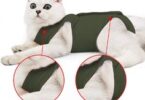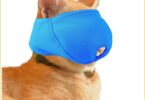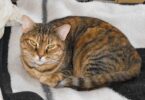Feeding cats is more than just filling a bowl with kibble or opening a can of cat food. It’s an essential aspect of feline care that directly impacts your cat’s health, longevity, and overall well-being. In this comprehensive guide, we’ll explore the art of feeding cats, covering the crucial aspects of cat nutrition and providing insights into how to nourish your feline friend correctly.
I. Understanding Feline Nutrition
Feeding your cat correctly begins with understanding their nutritional needs. Unlike dogs, cats are obligate carnivores, which means they primarily require animal-based protein for their diet.
1.1 The Importance of Animal Protein
- Protein: Cats need a diet rich in high-quality animal protein sources like chicken, beef, and fish.
- Amino Acids: Cats require specific amino acids, such as taurine, which are primarily found in animal tissues.
- Fat: Healthy fats are vital for energy, skin, and coat health.
1.2 Essential Micronutrients
In addition to macronutrients, cats require specific vitamins and minerals like vitamin A, vitamin D, calcium, and phosphorus. These micronutrients are essential for overall health, immune function, and bone strength.
II. Commercial Cat Food vs. Homemade Diets
When it comes to feeding cats, you have two primary options: commercial cat food and homemade diets.
2.1 Commercial Cat Food
- Pros: Commercial cat food is convenient, readily available, and formulated to meet feline nutritional requirements.
- Cons: Some commercial cat foods may contain fillers, artificial additives, or lower-quality ingredients. It’s crucial to read labels and select high-quality options.
2.2 Homemade Diets
Pros: Homemade diets allow you to have more control over your cat’s food and can cater to specific dietary restrictions or preferences.
Cons: Creating a balanced homemade diet for cats can be challenging and may require consultation with a veterinarian or veterinary nutritionist to ensure all nutritional needs are met.
III. Reading Cat Food Labels
Understanding how to read cat food labels is essential for making informed choices:
3.1 Ingredients List
- Protein Source: Look for named animal protein sources like “chicken” or “salmon” rather than generic terms like “meat by-products.”
- Fillers: Avoid cat foods with excessive fillers like corn, wheat, or soy, which provide little nutritional value.
3.2 Guaranteed Analysis
Check the guaranteed analysis for protein, fat, fiber, and moisture content. This information can help you select a cat food that aligns with your cat’s specific needs.
IV. Portion Control and Avoiding Overfeeding
Overfeeding can lead to obesity, which can have severe health consequences for your cat. It’s essential to monitor portion sizes and control calorie intake.
4.1 Determining the Right Portion Size
Consult your veterinarian or use feeding guidelines provided on cat food packaging to determine the appropriate portion size for your cat’s age, weight, and activity level.
4.2 Avoiding Free Feeding
Free feeding, where food is left out all day for your cat to graze, can contribute to overeating. Instead, establish a regular feeding schedule to control portion sizes.
V. Wet vs. Dry Cat Food
The choice between wet and dry cat food depends on several factors, including your cat’s preferences and specific health needs:
5.1 Wet Cat Food
- Pros: Wet cat food has a high moisture content, which helps keep cats hydrated. It’s also often more palatable and can be beneficial for cats with dental issues.
- Cons: Wet cat food can be more expensive and may spoil if left out for extended periods.
5.2 Dry Cat Food
- Pros: Dry cat food is convenient, has a longer shelf life, and can help maintain dental health by reducing plaque buildup.
- Cons: It has a lower moisture content, which may not be ideal for cats that struggle to stay hydrated. Some dry cat foods may contain higher carbohydrate levels.
VI. Special Dietary Considerations
Some cats have unique dietary requirements or restrictions:
6.1 Food Allergies and Sensitivities
Identify and address food allergies or sensitivities by switching to hypoallergenic cat food or foods with novel protein sources.
6.2 Dietary Supplements
Certain cats may benefit from dietary supplements, such as omega-3 fatty acids for skin and coat health. Consult your veterinarian before adding supplements to your cat’s diet.
6.3 Prescription Diets
If your cat has a medical condition, your veterinarian may recommend prescription diets specifically formulated to manage or treat that condition. Follow your vet’s guidance closely in such cases.
VII. Transitioning to a New Diet
If you need to change your cat’s diet, do so gradually to prevent digestive upset. Start by mixing a small amount of the new food with their current food and gradually increase the ratio over a week or two.
VIII. Monitoring Your Cat’s Health
Regularly assessing your cat’s health and adjusting their diet as needed is crucial:
8.1 Regular Vet Checkups
Visit your veterinarian for routine checkups and discuss your cat’s diet and nutrition. Your vet can provide guidance on any necessary dietary changes.
8.2 Signs of Poor Nutrition
Stay vigilant for signs of poor nutrition, including changes in coat quality, energy levels, weight gain or loss, or unusual behaviors. Address any concerns promptly with your veterinarian.
Conclusion
Feeding cats is both an art and a science that requires a deep understanding of feline nutrition. By providing your cat with a balanced, nutritious diet tailored to their specific needs, you can ensure they enjoy a long, healthy, and contented life. Remember that consulting with a veterinarian or veterinary nutritionist is always a wise choice when making dietary decisions for your feline friend. Nourishing your cat the right way is a fundamental aspect of responsible pet ownership, contributing to their well-being and happiness.







Hello,
New club music https://0daymusic.org
Download MP3/FLAC, Label, LIVESETS, Music Videos.
Promo Music DJs